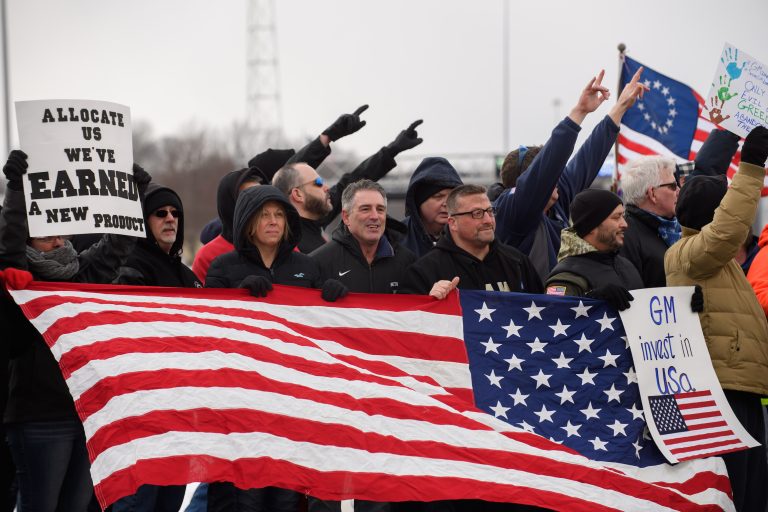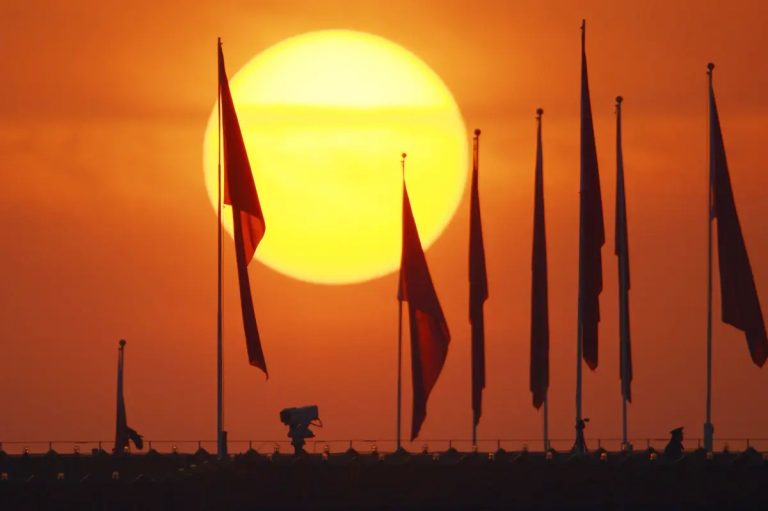Traditionally, leftist politics, including communist and socialist ideology, are associated with economic class struggle and redistribution of property to achieve greater egalitarianism between haves and have-nots. The right wing, by contrast, is seen as the defender of the existing social order, free markets, and thus beneficial to the elites.
But the nuances of “left” and “right” — terms that were vague to begin with — seem to be undergoing a massive shift in the modern West starting in the 1960s and especially in the past few decades.
Classical socialist or communist movements, which arose in Europe in the 1800s, were popular among the workers of the Second Industrial Revolution occurring throughout the continent. Poor working conditions and crushing poverty convinced many that economic and political reform was necessary and inevitable.
Today’s mainstream left, however, has largely dropped its rhetoric about the working class, and blue-collar voters throughout the West in turn trend towards right-wing parties and candidates.
Kaiserbauch, a YouTuber from the Czech Republic who comments on social and economic issues affecting Europe and the rest of the world, described what he calls reversing political poles between right and left in an April 11 video.
‘Political poles are Reversing’
Success
You are now signed up for our newsletter
Success
Check your email to complete sign up
Titled “Long March Through the Institutions,” the video concerns itself with “the radical leftist ideas influenced by the Frankfurt School and the 1968 protests slowly penetrated the opinion-making institutions of the Western countries and what consequences it has for the political map of the West.”
According to Kaiserbauch, the shift in the leftist movements came in the latter half of the 20th century, when economic progress under the capitalist industrial model produced such wealth and material advances that workers’ wages grew and their living standards improved to the point that revolution was no longer appealing to them.
“The industrial working classes were much better-off than ever before. The appeal of classic left-wing revolutionary economic policies was quickly waning,” he notes in a later section of his video, “The Political Poles Are Reversing.”
Instead, the counterculture aspects of the left became more pronounced as education, the media, policymakers, and corporate establishments began to take up social justice and progressivist causes championed by the Frankfurt school (a group of persecuted German and other European Marxist social theorists who emigrated to the United States) and their adherents.
“The new left growing from the avant-garde university environment differs from the classic socialist or communist movements of the 19th and early 20th centuries, which concentrated on the working classes, almost completely disregarding the everyday problems of working-class people,” Kaiserbauch continued, adding that today’s leftist discourse is full of “scientific-sounding terms” like “heteronormative,” “intersectionality,” or “ableism.”
Meanwhile, he observes that “your typical Western, mainstream-left party is pro-immigration, heavily supporting various LGBT+ inclusion policies, and environmentalist” causes. These positions are unpopular with their traditional voterbase — the blue-collar demographic — and may even be “openly hostile” to their interests.
A piece of text from the video describes, for example, how the green revolution championed by left-leaning politicians disproportionately disadvantages the poor, because “rich people will always be able to pay the utilities, buy the new expensive electric vehicle, purchase more expensive plane tickets” or afford a home built to all the latest environmentally protective code requirements.
From class divide to educational stratification
Similarly, he observed that the state’s embrace of mass immigration creates substantial difficulties with assimilating the newcomers — especially in European countries — leading to higher crime rates and social unrest, but this too is felt by the less-affluent working class, rather than wealthier professionals, who can better afford to live in safer communities.
Citing sociologists like Eric Kaufmann, author of the 2018 book Whiteshift that deals with the impact of heavy immigration on Western left-right politics, Kaiserbauch said that “college education is now the most prominent political cleavage in Western societies.” Whether a person has gone to college or not is “more helpful in predicting the political positions of citizens than income.”
A “lower-income college-educated barista in a coffee shop and a wealthy urban college-educated professional will hold similar views, while lower-income blue-collar worker and well-off plumber owning his own business will be closer to each other in their views” even though the barista and the blue-collar worker are closer to each in terms of economic class.
The wealthiest postal codes in the U.S., UK, and France are dominated by residents who vote for leftist parties; the poorer parts of these countries, which contained the traditional industrial base, tend to vote right-wing.
The impact of neoliberal globalism
The Left “tried to combine the economic themes appealing to the working class with the social progressivism appealing to the well-off urban electorate,” but the neoliberal shift of the 1980s and 1990s, as well as the fall of the Soviet Union and the rise of China as an industrial power paved the way for a major political change.
With the growth of globalization, Western workers got their jobs outsourced to cheaper overseas labor or to immigrants competing in local job markets, driving wages down.
“But the corporations, managerial classes, and urban elites profited magnificently from globalization,” as well as the countries to which manufacturing was moved, Kaiserbauch said.
“The hollowing living standards of lower-middle classes of Western native [citizens], large-scale immigration supported by the new life governments, and the feeling of losing control over their countries created potential for a new political movement in Western politics.”
“But the left could not harness and use these new frustrations” even though the people impacted by the effects of globalization were mostly those who belonged to the traditional support base of left-wing movements.
The character of the progressive left has also changed, creating what Kaiserbauch calls a “severe contradiction in the heart of the modern left” as leftist leaders and activists find it challenging to connect with their former electorate.
“Working-class people are significantly more culturally conservative and patriotic,” while the mainstream left’s “stance toward immigration is often supported by anti-Western, guilt-based interpretations of history incompatible with the views of native working classes.” Low-income blue-collar workers “saw their communities change before their eyes.”
The phenomenon of the left-right political shift moving from economic to cultural is “crowned by the Big Tech and multinational corporations becoming ostentatiously woke since it is very convenient for corporations to put a LGBT flag or BLM symbols everywhere rather than” deal with more traditionally left-wing causes like higher taxation.












